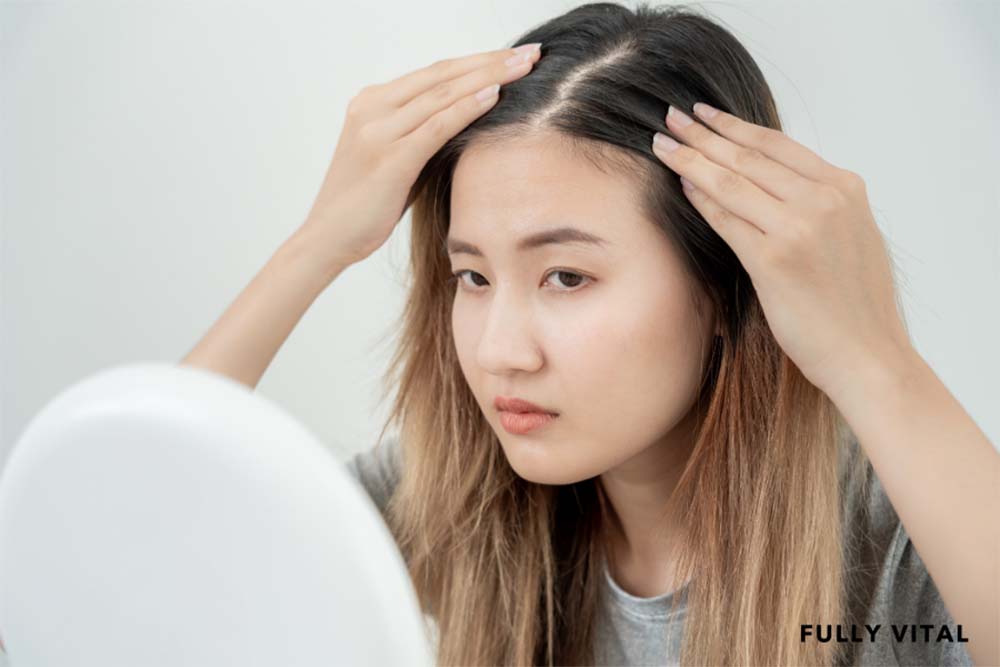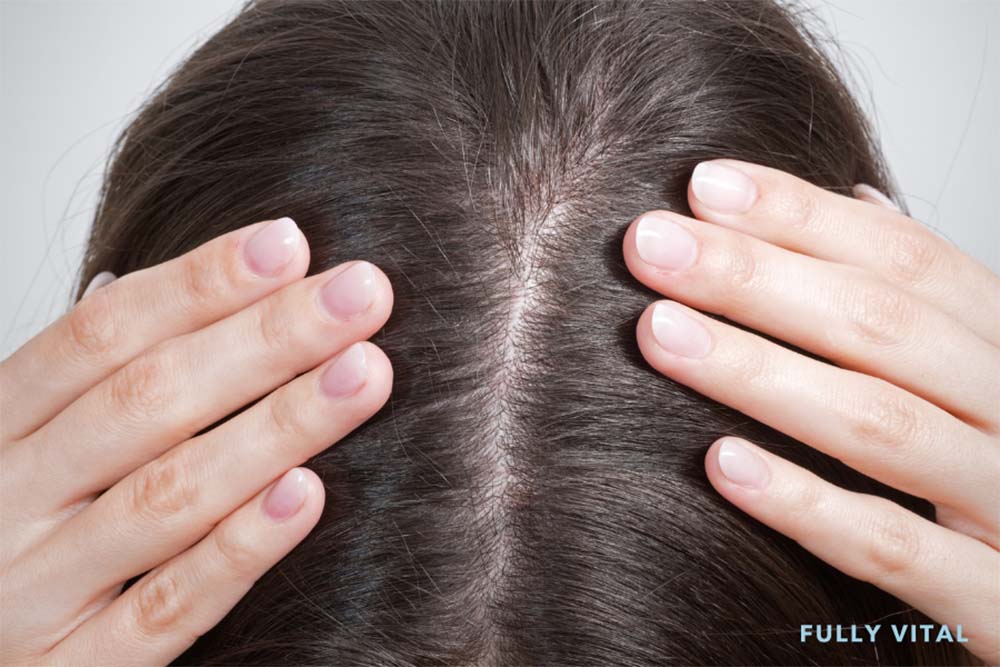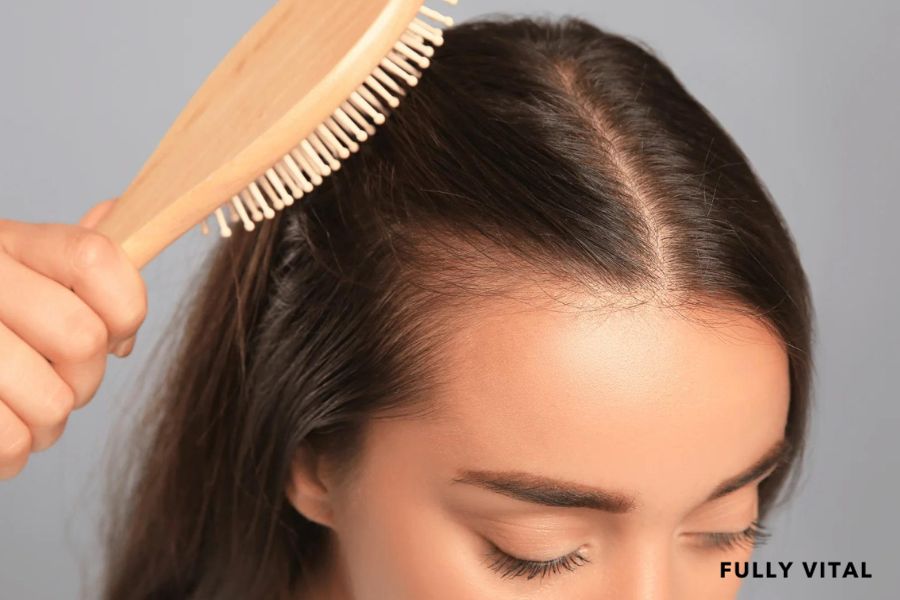
Everything You Need To Know About A Normal Hairline
Hair growth is a fascinating process that greatly impacts our appearance and self-esteem.
One crucial aspect of a person's hair is their hairline.
In this article, we will explore the concept of a normal hairline, its significance in determining our overall look, and various alternative options available for those who wish to make changes.
Whether you desire to maintain your natural hairline or explore different possibilities, understanding this topic is essential for embracing your unique beauty, feeling confident, and stimulating hair growth.

I LOVE MY HAIR NOW
FullyVital hair serum and hair vitamins made tremendous improvements in my hair. I truly love my hair now.
Dorit S.,
What Is A Normal Hairline?
A normal hairline refers to the natural hair growth pattern on your forehead, which frames your face and acts as the starting point for your hair.
While the shape and position may slightly vary among individuals, a normal hairline typically forms a smooth and even arc along the forehead.1

What Are The Features Of A Normal Hairline?
A normal hairline typically exhibits the following characteristics:
- Position: A normal hairline starts at the center of the forehead, forming an arc-shaped line along the hairline's edge.
- Evenness: It appears symmetrical on both sides, with similar heights and shapes.
- Smooth Transition: The hairline gradually blends into the rest of the scalp without any abrupt or jagged edges.
-
Natural Recession: The shape of a normal hairline allows for a slight recession as it moves towards the temples, creating a balanced and harmonious look.
What Is The Role Of Genetics In A Normal Hairline?
Genetics is one of the key factors that largely determines the characteristics of your hairline.
It influences whether your hairline will be high or low, rounded or straight, and symmetrical or asymmetrical.
The genes you inherit from your parents play a crucial role in shaping your hairline during development.
While genetics may provide a blueprint for your hairline, keep in mind that it can still be influenced by other factors such as age, hormones, and external hair care practices.
Embracing and understanding the role of genetics can help you appreciate and work with your natural hairline to enhance your overall look.
What Are The Benefits Of Having A Normal Hairline?
A normal hairline offers several benefits, including:
- Natural Beauty: A normal hairline complements your natural beauty and adds appeal to your overall appearance.
- Styling Versatility: With a normal hairline, you have more freedom to experiment with hairstyles and hair accessories.
- Hair Health: A normal hairline is often indicative of good hair health, which means stronger, thicker, and more resilient hair.2
What Are The Key Factors That Influence The Determination Of A Normal Hairline?
When it comes to determining a normal hairline, several factors come into play.
These factors can contribute to variations in hairline appearance among individuals:
Genetics
Your genetic makeup plays a significant role in determining the shape, height, and evenness of your hairline.
Age
As you age, hormonal changes can affect your hairline.
It might recede or change in shape, which is a natural part of the aging process.
Hormonal Shifts
During puberty, hormonal fluctuations can impact the position and shape of your hairline as it matures.
Hair Care Practices
Certain hair care practices, such as wearing tight hairstyles, excessive heat styling, or using harsh chemical treatments, can potentially impact the health and appearance of your hairline.3
What Are Some Common Myths And Misconceptions Related To Hairlines?
Hairline myths and misconceptions abound, causing unnecessary concerns and confusion.
Let's debunk some common myths and shed light on what actually constitutes a normal hairline:
Myth: A Straight Hairline Is Better
In reality, both rounded and straight hairlines can be considered normal.
There is no universal standard for what is "better" or more attractive.
Myth: Hairline Recession Indicates Baldness
While some people may experience a receding hairline as they age, it doesn't necessarily mean they will go bald.
Many individuals maintain a healthy head of hair despite a slightly receding hairline.
Myth: Uneven Hairline Indicates Hair Loss
A slightly asymmetrical hairline is common and often a result of genetics.
It does not necessarily indicate hair loss or any underlying issue.
Myth: Only Men Experience Hairline Changes
Hairline changes can affect both men and women.
Hormonal shifts, age, and genetics can lead to variations in hairline appearance for people of any gender.
Embrace Healthy Locks Today With Fully Vital!At Fully Vital, we're on a mission to help you embrace the beauty of ageless hair. Our science-backed hair growth products are designed to turn back the clock and rejuvenate your locks, so you can enjoy a healthier, more vibrant relationship with your hair. Key Features:
Join us on the journey to rediscover the vitality of your hair. Your hair deserves to look and feel its best, and we're here to make it happen! |
Final Thoughts On Normal Hairline
Understanding and embracing a normal hairline is essential for overall hair health and personal confidence.
By appreciating the natural beauty of our unique hairlines, we can feel empowered and proud of our individuality.
At Fully Vital, we are passionate about helping you maintain the health and vitality of your hair.
Through our range of hair growth products, we aim to provide solutions that cater to your specific needs and help you nurture a healthy relationship with your locks.
Our products are designed to stop the aging of your hair, promoting stronger, thicker, and more resilient strands.
Remember, your hairline is a key part of your overall hair health.
By prioritizing its care and embracing its uniqueness, you can enhance your natural beauty and boost your self-confidence.
Embrace your normal hairline and explore the possibilities of healthier, fuller hair with Fully Vital.
Take the first step towards healthier hair today and discover how our products can transform your hair care routine.
Join the Fully Vital community and let us help you unlock the potential of your beautiful hair.
Frequently Asked Questions About Normal Hairline
What's the difference between a widow's peak and a normal hairline?
A widow's peak refers to a distinct V-shaped formation in the hairline, typically in the center of the forehead.
While a normal hairline often follows an arch shape, a widow's peak is a variation that some individuals naturally possess.
Does your hairline change as you age?
Yes, your hairline can change as you age.
It is common for the hairline to slightly recede and become more defined over time due to the natural aging process.
Is there a specific pattern for a normal hairline?
Yes, a normal hairline typically exhibits a gentle arch shape when viewed from the front.
However, it's important to note that there is some variation in hairline patterns among individuals, which is determined by genetics and other factors.
Embrace the uniqueness of your own hairline rather than conforming to a specific ideal.
Can a receding hairline return to normal?
In some cases, a receding hairline can be managed and improved, but it may not always return to its previous state.
Is it normal for a hairline to recede in your twenties?
While it's more common for hairline recession to occur later in life, some individuals may experience a receding hairline in their twenties.
However, this can vary among individuals and may be influenced by genetics, hormonal factors, or other underlying causes.
Can stress affect your hairline?
Yes, prolonged periods of high stress levels can potentially contribute to hair loss, which may impact the appearance of your hairline.
Stress-related hair loss is often temporary and can usually be resolved by managing stress levels and adopting healthy coping mechanisms.
Does the hairline determine the type of haircut suitable?
Your hairline can influence the type of haircut that suits you best.
Different hairlines may be better suited for specific styles, such as fringes, bangs, or shorter cuts.
It's recommended to consult with a hairstylist who can assess your unique hairline and suggest suitable hairstyles that flatter your facial features.
Can hormonal changes affect our hairline?
Yes, hormonal changes, particularly during puberty, pregnancy, or menopause, can affect the hairline's shape and density.
These hormonal fluctuations may lead to temporary changes, such as a slightly higher or more pronounced hairline.
Is the forehead shape related to our hairline?
The shape of your forehead can influence the appearance of your hairline, as they are interconnected.
A larger forehead may lead to the perception of a higher hairline, while a smaller forehead may give the impression of a lower hairline.
Is our hairline determined at birth?
Yes, the basic pattern of your hairline is determined by your genetic makeup, which is present at birth.
However, it's important to remember that hairlines can change subtly over time due to various factors, including age, hormonal changes, and other influences.
Sources:
- Hoover, E., Alhajj, M., & Flores, J. L. (2020). Physiology, Hair. PubMed; StatPearls Publishing. https://www.ncbi.nlm.nih.gov/books/NBK499948/
- Martel, J. L., & Badri, T. (2019, January 30). Anatomy, Hair Follicle. Nih.gov; StatPearls Publishing. https://www.ncbi.nlm.nih.gov/books/NBK470321/
- Gavazzoni Dias, M. F. (2015). Hair cosmetics: An overview. International Journal of Trichology, 7(1), 2. https://doi.org/10.4103/0974-7753.153450







